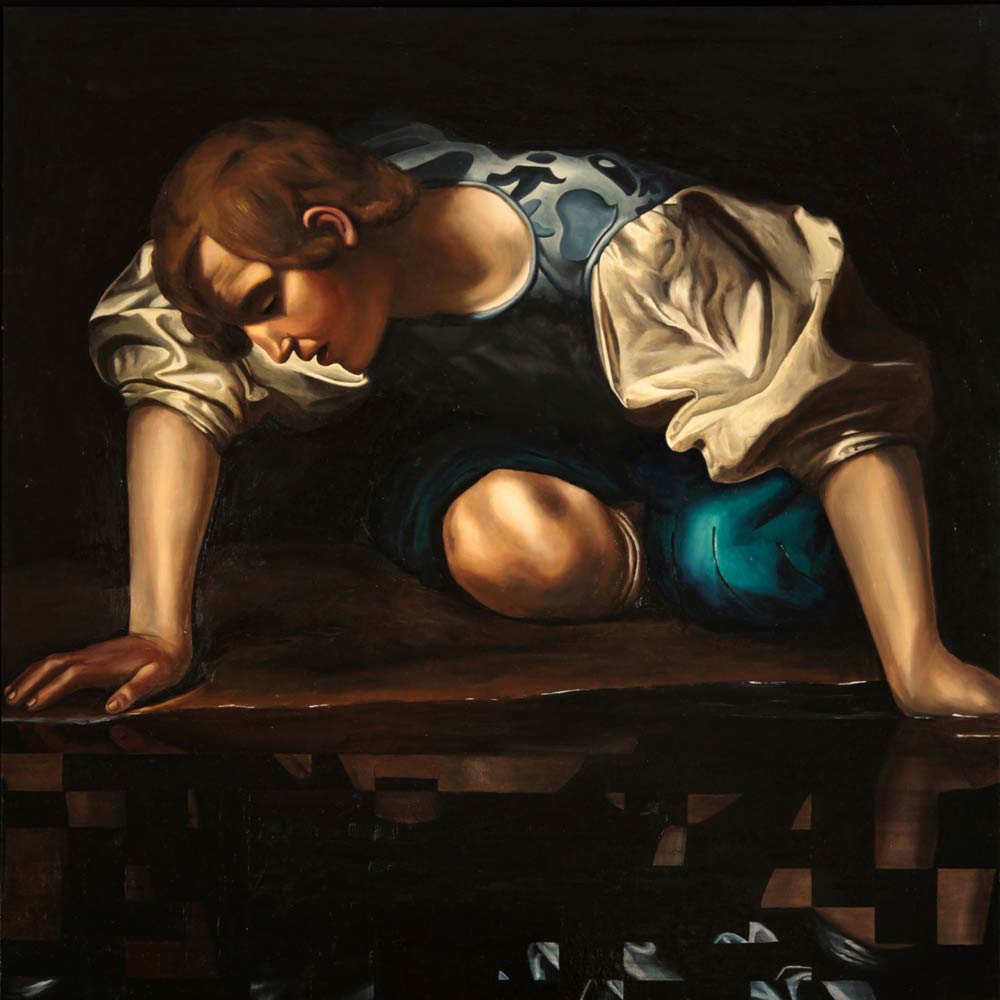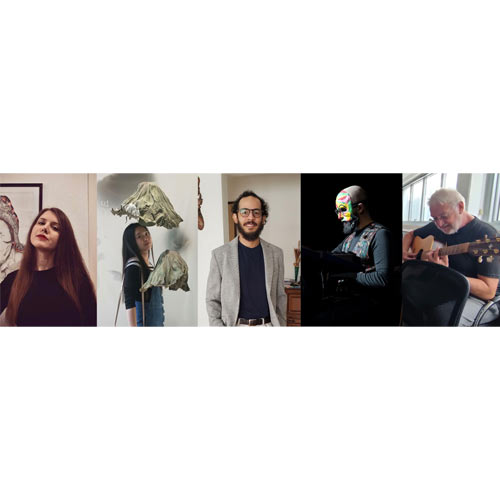This project uses quantum computing to reinterpret classical artworks. Three paintings from different eras are transformed through quantum simulations. The figures are divided into a square grid, and the arrangement of image elements is determined by a quantum model that simulates interactions between particles. The result is a series titled Quantum Transformation I, II, III, blending classical motifs with quantum-inspired structures. In addition to digital experimentation, the works are also recreated as oil paintings on wooden panels – an artistic exploration of the connection between traditional painting and quantum technology. On display is Quantum Transformation I – ‘Narciso’, a work based on Caravaggio’s Narcissus (circa 1597–1599).

Quantum Transformation I / Arianna Crippa, Yahui Chai, Omar Costa Hamido, Paulo Itaborai, Karl Jansen
Exhibit
Quantum Transformation I, II, III
Arianna Crippa (IT), Yahui Chai (CN), Omar Costa Hamido (PT), Paulo Itaborai (BR), Karl Jansen (DE)
-

QC-PAINT
QC-PAINT is a collective composed of both artist-researchers and physicists with the common interest of exploring Art and Science with quantum computing. Their work emerges from the intersection of physics, quantum computer science, music, interactive installation, and traditional oil painting. QC-PAINT members are Arianna Crippa (IT physicist, painter) Yahui Chai (CN physicist) Omar Costa Hamido / OCH (PT artist, technologist) Paulo Itaborai (BR physicist, artist) Karl Jansen (DE physicist).
Credits
We acknowledge the use of IBM Quantum services for this work. This work is supported with funds from the Ministry of Science, Research and Culture of the State of Brandenburg within the Centre for Quantum Technologies and Applications (CQTA). This work is funded by the European Union’s Horizon Europe Frame-work Programme (HORIZON) under the ERA Chair scheme with grant agreement no. 101087126. A.C. was supported in part by the Helmholtz Association — “Innopool Project Variational Quantum Computer Simulations (VQCS).” O.C.H. was supported by the European Project IIMPAQCT, under grant agreement Nr. 101109258 (DOI 10.3030/101109258).